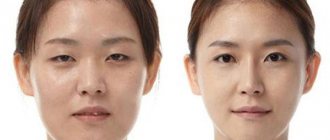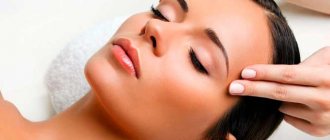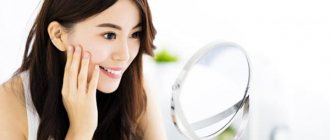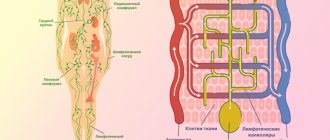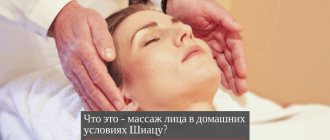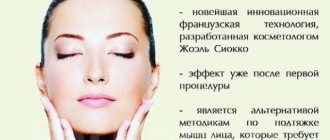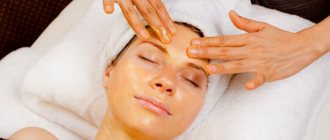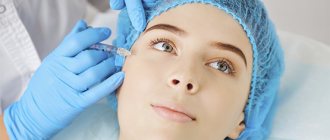A classic facial massage can transform the skin, improving its color, tone, moisture, and texture. Even if you don’t do it, you need to know its basics every day when you apply cream or wash your face.
We tell you all the most important things about classic facial massage to protect you from mistakes.
As a bonus, we give unique recommendations on how you can intensify the massage in order to also achieve an anti-aging effect: smooth out wrinkles and tighten your oval shape
What is a classic facial massage
Massage is the oldest way of influencing body tissues using hands. It appeared among primitive people as a reflex reaction to pain. If some part of the body was bothered, damaged, or injured, then there was an automatic urge to stroke it, knead it, or rub it.
For several thousand years, massage has been used to treat dislocations, spasms, and pain; return the body to physical shape; sharpen the figure.
A separate story is facial massage. Also known since ancient times, it is designed to solve cosmetic problems: improve appearance and fight signs of aging.
In its classic version, facial massage is based on a gentle effect on the skin. Movements are smooth and superficial. The calculation is made primarily to treat the skin; deeper tissues are minimally affected.
Technique and features
Classic facial skin massage is performed using a gentle and enveloping technique, which is determined by the following features:
- The procedure is done only with the fingertips, which move across the face with smooth, sliding movements. No force is used.
- The basic technique is stroking with periodic pressure. Patting and vibration are also used.
- The face itself remains motionless; there is no need to use the facial muscles: frown, open your mouth, blow, wrinkle your nose, etc.
- To make it easier to glide and reduce friction, the skin is moisturized with cream or oil before the procedure.
Skin preparation
To avoid inflammation, massage should be done only after thoroughly cleaning the face of dust and grease. To do this, you can precede the procedure with a steam bath or simply wash your face thoroughly. It is very good to massage after a sauna, when the pores of the skin are wide open and its surface is clean. Apply a small amount of massage oil to clean skin to help avoid damage to the epidermis.
Massage lines for face and neck
The main rule that must be followed in order not to cause harm when performing a classic facial massage: “Move along the massage lines!”
Massage lines are vectors along which the skin resists stretching three times stronger than along others. If you massage your face and neck taking them into account, the skin will not stretch or sag.
It is not difficult to remember massage lines.
- Basically, they go from the center of the face to the periphery - this is how we move along the forehead, cheeks, lower jaw
- We massage the upper eyelid according to the same principle (from the inner corner of the eye to the outer), and the lower - vice versa (from the outer to the inner).
- We walk along the nose from bottom to top.
- The neck has its own directions. Along its front part we move from bottom to top, and along its side – from top to bottom.
Author's massage techniques on video
There are different original methods of classical massage. The most popular ones were developed by Soviet cosmetologist Antonina Akhabadze and professor Alexei Pospelov.
According to Akhabadze
The technique helps to heal the skin and get a boost of relaxation. Facial muscles relax, blood vessels and skin tissue are strengthened. It is used mainly for women with existing age-related changes, and is of a therapeutic and prophylactic nature.
According to Pospelov
The main feature of the technique is the main therapeutic effect. In the process, the sebaceous glands are freed from excess contents by squeezing. Indicated if you have oily skin and acne.
Indications for the procedure
Classic facial massage is suitable for those who want to improve the quality of their skin.
Not everyone talks about it, but this procedure has limited functionality. It is more aimed at young rather than mature skin, since it does not provide a full anti-aging effect.
Rejuvenating massage is a different story; it is based on different techniques. We'll tell you more about it, but later.
For now it's classic. What problems can he cope with:
- dull color,
- decreased skin turgor,
- excess oiliness, rashes,
- dryness, flaking
- scars, scars.
Classic massage can also be prescribed for therapeutic purposes. With its help, problems of pinched nerves and loss of facial symmetry due to neurological diseases are solved.
Benefits of the procedure
A well-executed classic massage improves the appearance of the skin.
How it works?
The procedure activates blood flow and lymph outflow in the dermis and subcutaneous fat. And this means that:
- nutrition of skin cells will improve from the inside, their regeneration will accelerate, the main “building material” of the dermis, collagen, will be renewed,
- sebum secretion and water balance are normalized,
- due to the accelerated flow of lymph, swelling and looseness of the skin will be reduced (but to specifically combat fluid stagnation and swelling, special, stronger techniques are needed - lymphatic drainage).
Effect of the procedure
- fresh, healthy, radiant color,
- increasing skin tone and turgor,
- smoother texture: acne marks, scars will be reduced,
- reduction of oily shine,
- solution to the problem of peeling,
- slight reduction in expression lines and less pronounced crease lines,
- Puffiness will subside, swelling and bags under the eyes will decrease.
In addition to the aesthetic effect, a good mood and relief from fatigue are attached. Although the work is not on the body, but on the face, the procedure still has a relaxing and calming effect.
Cosmetologists can still promise a lifting effect, but you shouldn’t count on noticeable changes. Classic facial massage CANNOT:
- tighten the cheeks and oval,
- remove jowls and double chin,
- raise the upper eyelids and corners of the lips,
- smooth out wrinkles, creases, nasolabial folds.
In order to fight all these age-related changes, it is not enough to work only with the skin. It is also necessary to influence the muscles, fascia, and deep-lying vessels through which lymph and blood flow. And this requires more powerful massage techniques that get to the root of the aging problem.
Read about how to do anti-aging massage after one chapter.
Benefits of classical massage
Although classical massage is not very effective in the fight against age, its basics are useful for every woman to know, no matter how old she is. It is especially important to learn massage lines.
We need this knowledge several times a day when we perform daily beauty rituals. But many do not understand basic things, so they make mistakes, for which they have to pay with youth and beauty.
- How do you apply cream (gel, emulsion, serum, oil, squalane) to your face? It is correct to do this, taking into account the massage lines: move from the middle of the forehead to the temples, from the nose → to the ears, from the chin → along the contour of the lower jaw → to the earlobes.
- Do you treat the area around your eyes correctly? Do you remember that the rule “from center to periphery” only works for the upper eyelid? And along the lower one we move in the opposite direction. We use patting movements.
- The neck – we also often take care of it incorrectly. Follow the massage lines when applying cosmetics to it: from the front from bottom to top, from the sides from top to bottom.
- When applying cream to your face and neck, use classic techniques: stroking, rubbing, patting, circular movements. This will warm up the skin and help the cosmetic product penetrate into its deeper layers. Did you feel the warmth? Massage and cosmetics work.
- How do you cleanse your face? Do you wash your face with gel/cream/foam or wipe it with hydrolate/micellar water/milk? In both cases, do not forget about the massage lines.
- When you rub your neck with a washcloth while showering or taking a bath, do you remember the directions of movements?
- Have you already become acquainted with the trendy method of exfoliating dead cells and lymphatic drainage - drybrushing (massage with a dry brush)? Here, in general, massage lines should be followed very strictly: the effect on the face is powerful, and violation of the technique can stretch the skin.
Moreover, the basic principles of classical massage are also taken into account when creating original techniques.
For example, MelAnnett's rejuvenating techniques are based on deep treatment of facial tissues, muscles and fascia are affected, so the movements are strong and intense: we squeeze, knead, pull, grind, press, pinch. But at the same time, the classics also come in handy: massage lines are followed, and at certain stages classical techniques are used (stroking, kneading, patting, vibrations).
License
History of massage
Classical massage is one of the oldest cosmetological procedures: even Diocles, a student of one of the most famous ancient Greek doctors and naturalists, Galen, prescribed hygienic baths, various oils and ointments to his patients to soften the skin during massage. The history of the origin of the term “massage” itself is interesting, which still causes scientific controversy. Some scholars believe that it comes from the Arabic mass (“to crush, squeeze with hands”) or from the Latin word massa (“sticks to the fingers”).
But one thing is certain - already in Homer’s poem it is said that women used oils and ointments to anoint and knead the bodies of heroes both before battles and to maintain their own radiant beauty. In the writings of Hippocrates, there is confirmation that massage is used for hygienic (that is, cosmetic) purposes: “Friction causes contraction or relaxation of tissues,” Hippocrates wrote, “leads to emaciation or fullness, dry and frequent friction tightens, and soft, gentle and moderate thickens the tissue."
In Greece and India, Turkey and medieval Europe, various types of massage, including cosmetic, enjoyed constant popularity, but until the nineteenth century the massage method was not scientifically substantiated. Only starting from the second half of the nineteenth century in Europe, and then in The first clinical and experimental work on classical cosmetic massage appeared in Russia.
The domestic school of cosmetic massage has made a great contribution to the development of cosmetology as a medical science and is known all over the world thanks to a galaxy of brilliant scientists and practitioners - one only has to remember such names as A.I. Pospelov (author of one of the oldest Russian methods of cosmetic massage, developed back in 1886 .), M.A. Rozentul, A.I. Karamyshev, V.A. Arnold, V.K. Kramarenko, A.F. Verbov, E.S. Zalkind, A.F. Akhabadze, N.A. Belaya and many others.
Indications and contraindications
Cosmetic massage has an effective physiological effect on the skin, underlying tissue, nerves, blood and lymphatic vessels of the face and neck and, as a result, is one of the most effective methods for preventing premature aging of the skin, preventing its sagging, the appearance of folds and wrinkles. Moreover, cosmetological massage is equally useful for dry, oily and problematic skin.
It is often prescribed to restore the oval of the face, reduce fat deposits in the chin area (double chin, fat folds on the neck, etc.), with excessive obesity, with a general weakening of the muscles of the face and neck, with pastiness and swelling of the facial skin caused by disorders water-salt metabolism (massage provokes the expansion of functioning capillaries and the opening of reserve capillaries, which improves tissue trophism, increases lymph circulation and outflow of venous blood).
Massage is recommended for sallow complexion, if the sebaceous glands are disrupted (dryness, flaking, or, conversely, increased greasiness of the skin); if there are scars of various origins on the skin of the face, especially fresh ones, or compactions after juvenile acne.
Massage improves the function of peripheral receptors, pathways that enhance reflex connections of the cerebral cortex with muscles, blood vessels and nerves. Therefore, cosmetic massage can also be used as symptomatic therapy in premenopausal and climatic periods, with vegetative dystonia with a tendency to increase blood pressure, spondyloarthrosis of the cervical and thoracic regions. The advisability of prescribing a cosmetic massage is determined primarily by the condition of the skin, as well as the age of the client. Young people may need therapeutic massage if they have oily seborrhea of the face with residual acne, the presence of infiltrates, or decreased tone of the facial muscles. And after 30 years, when the elasticity of the skin begins to noticeably decrease, massage to prevent premature skin aging is recommended for almost everyone.
But despite the undeniable benefits of cosmetic massage, there are also a number of contraindications.
Contraindications
ABSOLUTE CONTRAINDICATIONS EXIST FOR:
- Severe diseases of the cardiovascular system;
- Severe hypertension (stage III) and hypotension;
- Acute inflammation of the facial nerve;
- Diseases of the thyroid gland;
- Progressive tumor of the facial skin;
- Severe somatic diseases;
- Violation of the integrity of the skin, abrasions or cracks on the face;
- Pustular and other infectious diseases of the facial skin;
- Acute skin diseases (dermatitis, rosacea, eczema, herpes);
- Fungal diseases.
Cosmetic massage of the scalp has a beneficial effect on the hair and strengthens it, but despite this, if there is excessive hair loss, such a massage is contraindicated. It is also not recommended to perform cosmetic facial massage if the layer of subcutaneous fat is not sufficiently developed.
Preparing the client for the procedure
It is advisable to conduct the session in an isolated room, without extraneous sources of noise and bright directional light sources. The preferred temperature is +22-23 C. During the procedure, the client should be helped to sit comfortably in the cosmetology chair. Help him get rid of excessively constricting clothes and relax completely. Tuck his hair under a cosmetic cap; it is also advisable to free his chest from clothing and cover it with a disposable napkin or cape.
Before the session, it is necessary to additionally prepare the client’s facial skin, cleansing it of cosmetics and other contaminants. The skin must be cleansed with lotion, cosmetic milk or other special product depending on its type (the easiest way to cleanse is washing with a special foam).
When cleansing your skin with milk or lotion, remember the direction of the skin lines - they are also called lines of minimal skin stretch or massage lines. All massage techniques, as well as skin cleansing and the application of nourishing masks, are mainly carried out in the directions of these lines.
Directions of the main massage (skin) lines:
- From the center of the forehead to the temples (almost parallel to the eyebrows, slightly decreasing at the end of the lines);
- Along the upper eyelid - from the inner corner of the eye to the outer;
- Along the lower eyelid - from the outer corner of the eye to the inner;
- From top to bottom along the protruding part of the nose;
- From the middle of the protruding part of the nose obliquely to its wings;
- From the wings of the nose and the center of the upper lip in an arc to the upper parts of the ears;
- From the corners of the mouth to the tragus of the auricles;
- From the center of the lower lip to the earlobes;
- From bottom to top on the front surface of the neck;
- From top to bottom along the sides of the neck;
- On the back of the neck - from bottom to top.
After cleansing the skin, the remaining cosmetic products are removed from it. The skin can then be warmed to soothe and more deeply relax the facial muscles and dilate blood vessels. You can warm up your facial skin using either a hot, damp compress (applied for 2-3 minutes) or a steam bath for 5 minutes).
The technique of preliminary massage using warm “irons” similar to tablespoons is now very popular.
The technique of massage with “irons” was developed by cosmetologist Rene Koch. Moreover, the basis for his technique was his childhood experience: his mother, using a cold spoon, helped young Rene get rid of bruises and contusions.
For massage with “irons” (or spoons) in the absence of the necessary equipment, you can use simple tablespoons or teaspoons, heated (or cooled), lubricated with oil or cream. It is better to use silver or cupronickel spoons, but if they are unavailable, simple ones will do just fine.
The main movements of the massage therapist are circular rubbing with clockwise pressure, then light superficial rubbing counterclockwise, as well as spiral rubbing and ironing.
Ironing massage technique
- Warm or lubricated spoons are applied to the base of the eyebrows at the bridge of the nose and in a circular motion lead along the forehead to the temples.
- Using rotating movements, warm spoons lubricated with cream are carried out from the lips along the cheeks to the ears (along the massage lines!) This is done in several stages, starting from the upper lip.
- A spoon, cooled under running water or in finely crushed ice, is applied to the eyelids. This helps eliminate puffy bags and dark circles under the eyes.
- A warm oil spoon is carried out with rotational movements from the base of the neck to the chin - the movement goes along several lines, first in the middle (without affecting the thyroid gland area), then along the lateral surfaces of the neck.
- In the initial position, warm oil spoons are placed in the hollow of the décolleté and guided in a circular motion to the armpits.
The entire procedure takes no more than 10 minutes and can be used as a separate massage session.
Before the procedure itself, massage cream, oil or talc can be applied to the client’s skin (along the massage lines), which will ensure easier sliding of the hands without displacing the skin. You can moisturize the palmar surface of the massage therapist’s hands with cream to ensure better gliding.
The massage therapist should take into account the specific constitution of the client. For example, people with a hypersthenic physique can tolerate a long and energetic procedure quite satisfactorily, while normosthenics and asthenics require a calmer and shorter session. Moreover, people under 30 years of age receive massage more energetically, while middle-aged and elderly people receive a massage more calmly.
The duration of the session can also be determined by the client's blood pressure readings. The usual duration of a facial massage ranges from 10 to 20 minutes. However, for those people who have low blood pressure, cosmetic massage is given in any case for no more than 10 minutes, since they often experience dizziness.
But in any case, the type and duration of cosmetic massage is determined individually, depending on the type of facial skin (dry, oily, normal or combination), the thickness of subcutaneous fat, skin turgor and muscle tone of the client.
As a rule, cosmetic facial massage is carried out in courses two to three times a year (each course includes 15-20 procedures). During the course, massage is prescribed 2-3 sessions per week.
Between courses, you can carry out maintenance massage procedures once every 7-10 days.
Key techniques of cosmetic massage
- Kneading . Kneading is intended primarily to target muscles. Kneading is one of the most difficult massage techniques. This movement involves grasping soft tissues and alternately squeezing, squeezing and squeezing the tissues. By increasing blood supply to the massaged area, kneading improves tissue nutrition, increases tone and strengthens muscles, and also promotes regenerative processes. Kneading increases the elastic properties of muscle tissue. Therefore, “kneading is usually considered as passive gymnastics for muscle fibers” (I.M. Sarkizov-Serazini).
- Effleurage . Reception is a special type of vibration. The essence of tapping is that the massage therapist’s hand alternately strikes, causing rhythmic contraction of the tissue. It is performed on the palmar surface of the nail phalanges of the fingers or with an open hand or fist. Active, energetic tapping has a stimulating effect on the nervous system, while light, weak tapping has a calming effect.
- Chopping. A more active technique than effleurage, which is used for severe fat deposits. It is performed with the ulnar edge of the hand, which is held in the middle position between pronation and supination, the fingers are slightly apart and relaxed.
- Vibration . Vibration refers to massage techniques that create oscillatory movements of varying speeds and amplitudes in the massaged tissues. A distinction is made between continuous and intermittent vibration. This technique helps improve tissue trophism, increases muscle contractility, and also activates regenerative processes. Remember that all movements are made strictly along the massage lines of the face.
Self-massage at home: which one to choose
Do you want to help your face transform with a massage, but don’t know where to start?
First, choose self-massage, that is, knead your face yourself at home.
On your own, you take care of your face systematically and systematically, day after day. You understand him, you know what he needs, and you see the results in the mirror. In addition, self-massage is convenient (it is always at hand) and free.
Which techniques should you choose?
Classic self-massage of the face is a good option, but you need to remember that its capabilities are limited. As we have already said, it is designed to improve the condition of the skin, and not for rejuvenation, so it is more suitable for young girls.
We recommend that women of any age opt for deep self-massage. Its functionality is much wider. It solves the same problems as classic massage, only it also fights age-related changes: wrinkles, creases, nasolabial folds, jowls, extra chins, swollen ovals, ptosis of the upper eyelids, drooping corners of the lips, swelling, bags under the eyes.
Effective rejuvenating self-massage gets to the causes of aging, works not only at the skin level, but also:
- at the level of muscles and fascia (myofascial techniques): eliminates muscle spasticity, restores their healthy tone, returns them to their natural length and elasticity,
- relieves long-term stagnation of lymph, improves lymph drainage (lymphatic drainage techniques).
At the same time, you can start doing anti-aging self-massage as early as you like, even at 18-20 years old (the main thing is that the body is already formed by this moment). After all, deep tissue treatment not only eliminates age-related changes, but also prevents them. The sooner you start, the longer you will remain young and beautiful.
MelAnnett is considered the guru of anti-aging facial massage (and natural rejuvenation in general) in our country. Her online beauty marathons have already attracted millions of participants, and everyone has results.
If you’re not yet in the know, then it’s better to start working on yourself with the basic “SmeloNET” marathon. Here you will master the best self-massage techniques, including myofascial and lymphatic drainage. By completing a marathon, you will acquire a lot of useful habits that will prolong your youth for many years.
How to do a sculpture massage?
Thanks to deep treatment of muscles and fascia, it makes the oval of the face clearer. In order to avoid slipping of fingers, use special wax or talc. First, the skin of the neck and chin is tightened, and then the remaining areas are massaged. When performing a sculptural massage, three techniques are used sequentially:
- Tingling;
- Vibration;
- Intense pressure.
The entire face is treated for half an hour.
The deep layers of the skin are affected using a pinch massage. It cleanses pores, fights acne, normalizes the production of sebaceous glands, and improves lymph flow. The duration of one procedure should not exceed thirty minutes.
Students of the School of Masters study facial massage techniques for two main reasons: they want to start performing the procedure for their clients or they want to become younger and more beautiful themselves: without cosmetologists, injections and plastic surgeries. Do you also have such desires? We are waiting for you at online or offline training courses!
Author of the article:
Practicing: 27 years, Teaching: 20 years
Preparing for a massage
Preparing for manual self-massage is very simple. It can be done anywhere, no special conditions or equipment are required.
Are your hands still there? This is the main thing. Clean facial skin and clean hands.
At first, while you are still getting to know your face, it is better to practice in front of a mirror. Once you get used to it, you won’t need it anymore. You can do self-massage in front of the TV, in a bathhouse, on the beach, in public transport, even at work (if you are willing to sacrifice makeup).
The only thing you need to take care of before self-massage is cleansing. There should be no makeup, dust, sweat, or sebum on your face. The most convenient and gentle option is to wipe the skin with a cotton pad soaked in hydrolate (plant distillate). For this, you can choose one of the Beauty365 hydrolates: mint, sage or lavender (look for them at www.beauty365.ru). If you are not doing the procedure at home, use wet wipes.
For deep self-massage, nothing else is required. We perform it on dry skin for better contact with the hands.
After the procedure, we saturate the face with a cosmetic product. Warm skin will be ready to absorb everything it needs. Natural remedies will be especially useful: oils, squalane, balms. Look for them in the line of the brand www.beauty365.ru
If you still do a simple classic massage, then before it you need to moisturize the skin with cream or light oil. This is required for hand glide and smooth movements.
Means to enhance the effect of self-massage
To ensure a more intense effect on the skin, use special cosmetic products to perform self-massage.
The ARAVIA Professional series has products that will help make the procedure comfortable and effective.
Sculpting oil-concentrate for facial massage Massage Oil-Drops
Thanks to its special highly concentrated composition, massage oil for the face, neck and décolleté helps slow down the aging process, reduce wrinkles, reduce fat deposits in the chin area and model a clearer contour. Due to its light texture, the oil glides perfectly, allowing you to gently but effectively treat the underlying tissue.
Modelage Active Cream Massage Cream
Non-comedogenic massage cream provides easy glide during self-massage of the face, neck and décolleté. Cares for the skin, filling it with moisture, antioxidants, amino acids, oils and vitamins. The cream enhances the effect of massage in any technique - improves the oval of the face, restores the collagen framework and the protective lipid barrier of the skin.
Use the products individually or in combination to enhance their effect. Add a few drops of oil concentrate to a portion of the cream, rub the mixture in your palms and perform a massage using the chosen technique - this will improve the glide of your hands and get the maximum result from the procedure.
Perform self-massage of the face correctly and regularly, using effective cosmetics to achieve visible, lasting results.
Contraindications and precautions
Can everyone do self-facial massage? Not everyone, but there are few restrictions.
The procedure is contraindicated if there are local skin problems in the acute stage: acne, rosacea, abrasions, injuries, burns, bites, herpes, eczema.
Local vascular disorders are also limiting: rosacea, fragile blood vessels.
In case of damage to the facial nerve and other neurology, it is better to consult a doctor. He may prescribe a therapeutic massage.
General health matters too. You should refrain from self-massage in the following cases:
- elevated temperature,
- severe hypertension,
- exacerbation of chronic diseases,
- severe inflammatory processes,
- oncology,
- blood diseases,
- cerebral circulatory disorders.
How to do self-massage at home
Would you like to try some rejuvenating self-massage techniques right now? We have prepared a selection of exercises from MelAnnett that are designed to solve various problems. Start by working on the areas that concern you the most.
TOP 10 anti-aging massage techniques from MelAnnett:
- Express facial skin lifting
- Elimination of eyebrow creases
- Elimination of wrinkles on the forehead
- Fighting bags under the eyes and crow's feet
- Smoothing nasolabial folds with tongue massage
- Raising the upper eyelids and opening the gaze
- Raising the corners of the mouth
- Fights wrinkles around the mouth and adds volume to lips
- Elimination of excess chins
- Giving the nose a neat and well-defined shape
Features of home performance
Mastering the technique of manipulation in the classical version is considered an accessible and exciting activity. First you need to clarify where the lines on the face are located along which the passage is made. We also need information about the direction of movement of the hands when performing manipulations.
Lines and directions:
- corners of the mouth - upper part of the ears;
- the central point on the forehead is the temporal part;
- lower part of the nose - earlobes;
- inner corners of the eyes - outer corners with a passage along the upper eyelid (repeat the element along the lower eyelid in the opposite direction);
- The central point of the chin is the temples.
You can supplement your home treatments by working on your décolleté area. To do this, strokes are made from the sternum to the contour of the face and vice versa.
The process of self-performing a massage is built according to the following scheme:
- removing cosmetics from the face;
- steam bath using warm water or herbal decoction (helps open pores, which improves the quality of skin cleansing);
- drying the face by blotting with a clean towel;
- distribution of oil or anti-aging cream over the work area;
- successive passes along the main lines used in massage;
- remove product residues with a dry cloth;
- rubbing with ice (preparations based on medicinal herbs).
It is better to do a massage in the evening before bed. At night, the skin will have time to rest from mechanical stress and process valuable microelements that enter through the pores. If you follow the principles of the technique, you can see the first results after 3-4 procedures.
Results, photos before and after facial massage
Look at the results the participants of the MelAnnett beauty marathons managed to achieve.
With the help of competently performed anti-aging self-massage of the face, in 2-3 weeks you will see a younger self in the mirror.
What will you achieve:
- wrinkles, folds, creases will be reduced and completely gone,
- the skin will become elastic, smooth, even,
- swelling, bags under the eyes, looseness will be eliminated,
- cheeks will be tightened, nasolabial folds will be smoothed out,
- a perfect clear oval without bulldog cheeks will be “drawn”,
- the double chin will be erased, the “angle of youth” will be restored,
- eyebrows, upper eyelids will rise, eyes will open,
- the corners of the mouth will rise, the lips will become fuller,
- the nose will acquire an elegant appearance (due to the removal of excess fluid), its pecking tip will rise (relieving spasms of the lateral muscles of the nose),
- The complexion will improve and even out.
The benefits of self-massage of the face
If performed regularly, self-massage has a positive effect on the skin in several ways:
- activates blood flow and improves complexion;
- accelerates metabolic processes and rejuvenates the skin;
- stimulates lymph flow and eliminates swelling;
- reduces the severity of wrinkles and post-acne;
- has a lifting effect, tightening the oval of the face;
- helps cope with redness and acne;
- promotes deeper penetration of skincare cosmetics.
Of course, the results of self-massage will only be noticeable if you do it correctly.
